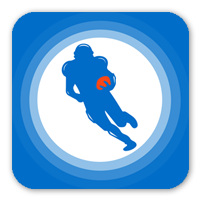Ian McNeill's free comprehensive course preview of PGA National for the 2025 Cognizant. In this piece, Ian overviews PGA National's Champion Course and gives every key metric and trend you'll need to make an informed decision on this week's betting board.
Fresh off of the relaxing, jovial atmosphere of Mexico's National Open, the PGA Tour makes its maiden voyage into the Eastern timezone for the first of four consecutive events held in the Sunshine State. Unlike Vidanta Vallarta, however, the courses in the Florida rotation aren't exactly known for their forgiveness, as the next four weeks will each feature a venue that ranks inside the top nine most difficult venues on the PGA schedule.
PGA National itself is far from the traditional "gentle handshake" we've become accustomed to thus far in 2024, as its 10-year scoring average of 71.41 (+1.41 to par) ranks as the toughest non-major venue on the golfing calendar in that time. But what makes a flat, 7,100-yard layout one of the most daunting tests we'll see all year? That will all be uncovered in the next few pages and set the stage for Florida's two main events coming directly on the horizon. Although this field features a collection of established stars, exciting up-and-comers, and recent victors on the PGA Tour, we're assured of seeing our fair share of Major-esque carnage around the links of Palm Beach Gardens this week.
Before we get into the oddsboard on tap for golf bettors Monday morning, this piece will serve to break down every key trend and statistic I'm weighing to project a player's viability in the outright market and set you up to make the crucial decisions necessary before the market shifts later in the week. Without further ado, here is my comprehensive scouting report on PGA National and the 2025 Cognizant Classic!
Featured Promo: Get any Props Premium Pass for 50% off using code SUMMER. Win more with our two new Props Optimizer tools -- one for PrizePicks Props, and one for Sportsbook Betting Props. Find optimal prop bets and get our recommended picks daily! Go Premium, Win More!
The Golf Course
PGA National (Champion Course) - Par 71; 7,167 yards
Past Champions
- 2024 - Austin Eckroat (-17) over Min Woo Lee and Erik Van Rooyan
- 2023 - Chris Kirk (-14) over Eric Cole (playoff)
- 2022 - Sepp Straka (-10) over Shane Lowry
- 2021 - Matt Jones (-12) over Brandon Hagy
- 2020 - Sungjae Im (-6) over Mackenzie Hughes
- 2019 - Keith Mitchell (-9) over Rickie Fowler & Brooks Koepka
PGA National by the Numbers (Off-The-Tee):
- Average Fairway Width -- 29.5 yards; Ninth most narrow on the PGA Tour
- Average Driving Distance -- 277.1 yards; Fourth lowest on Tour
- Driving Accuracy -- 60.2%; 17th lowest (roughly middle of the pack)
- Missed Fairway Penalty -- 0.34; 16th lowest (also middle of the pack)
- Strokes Gained: Off-the-Tee Difficulty: -0.041; Fifth toughest on Tour
With its collection of forced layups, narrow landing areas, and water hazards, there is perhaps no course on the PGA Tour more set up to mitigate driving distance than PGA National. Featuring an average penalty count of 0.73 strokes per round, this course ranks behind only TPC Sawgrass and Pete Dye's Stadium Course in terms of expected reloads, and only two of the 14 driving holes on this property come without any danger of a potential hazard.
As a result of this ever-present threat, you'll often see players take a conservative approach around the Par 4s (and even 5s) this week. The average driving distance here sits nearly 25 yards lower than the historic mark of last week's venue (Vidanta Vallarta), and only three courses on the entire schedule have conceded a lower average driving distance since 2015.
With many of the field's preeminent bombers forced to stay in second gear around this routing, the door suddenly opens for the Tour's shorter, more positionally-savvy drivers of the ball to separate themselves around PGA National. In recent years, we've seen the likes of Zach Johnson, Kramer Hickok, Russell Henley, and Tyler Duncan all finish inside the top five in SG: OTT for the week -- a group of names you'd never see dominate a recent setup like Vidanta, Scottsdale, or Torrey Pines with their driving prowess.
This isn't to say that bombers are completely dead around this penal setup, as we've also seen Min Woo Lee, Cameron Young, Brandon Hagy, and Rory McIlroy utilize their immense length to great effect in recent years. However, the recent leaderboards around PGA National indicate that the advantage they typically enjoy is significantly reduced with so much peril awaiting to swallow up off-line tee shots.
When building my optimal off-the-tee profile for this week, reliability will play as large of a factor as any distance or other driving metric out there. In particular, positive history around this course will be weighed, as will historical acumen on other similarly positional golf courses with high penalty averages. In particular, I've built a positionally heavy driving model focused on Good Drive Percentage, Fairways Gained, and SG: OTT around the likes of Innisbrook, Harbour Town, Sedgefield, TPC Southwind, TPC Sawgrass, and Colonial CC, among others. If a player has shown a repeated ability to gain strokes in these three categories around the setups listed above, I have full confidence they'll be able to conquer a similarly strategic driving test this week.
PGA National by the Numbers (Approach):
- Green in Regulation Rate -- 59.9%; Seventh lowest on the PGA Tour
- Strokes Gained: Approach Difficulty: -0.054; Most Difficult on Tour
- Key Proximity Ranges:
- 175-200 yards (accounts for 25.2% of historical approach shots)
- 150-175 yards (22.9%)
- 125-150 yards (17.2%)
If you thought the threat of water was limited to just a players' tee shots around PGA National, you'd be sorely mistaken, as this setup features as many hazards in play to players' approaching the green as we discussed off of the tee. In fact, 12 of the 18 greens around this routing are guarded by some water hazard. With nearly two-thirds of historic approaches coming from over 150 yards, players must be especially dialed in with their middle/long iron play to avoid adding to the ever-growing count of penalty strokes assessed by PGA National.
In the last section, we discussed the variety of different driving profiles that have managed to find success here at the Cognizant Classic, but iron play has been one facet of the game that has remained a consistent throughline as we scroll through the list of past champions. Champions here since 2012 have averaged a whopping 6.4 strokes to the field on approach, and only three winners in that time have managed to lift this trophy whilst gaining less than 5.9 strokes in that category (although none gained less than 3.3).
As such, identifying elite iron play will remain the most important aspect of my handicapping process this week in Palm Beach. As per most weeks, I'll be honing in on long-term proximity splits from my key range of 125-200 yards (a range that has accounted for 65% of approaches around PGA National), as well as recent splits around the likes of TPC Scottsdale, Riviera, and Wai'alae -- all venues that feature a similar emphasis on middle/long iron play.
However, given the danger of playing around the greens this week, I'll also be looking at metrics that reward a more calculated ball-striking approach. Stats like Green in Regulation % or Poor Shot Avoidance aren't typically markers to look at when most PGA Tour stops are set up as a race to 20-under-par. Still, on a week where winning scores have yet to peak past 15-under in the last 20 years, a safe approach shot to 35 feet can gain you a sizeable amount of separation compared to the field average. These "safety-first" metrics will be as key to my approach modeling as the typical proximity/birdie chance creation stats I lean on heavily every week.
PGA National by the Numbers (Around the Greens):
- Scrambling Percentage -- 54.7%; 2.9% below Tour Average
- Sand Save Difficulty -- +0.016; 13th easiest on Tour
- SG: Around the Green Difficulty: +0.019; 11th easiest on Tour
One of the biggest surprises I found in my initial research for this week was the lack of predictiveness we've seen from Around the Green metrics at the Cognizant Classic. Top five finishers here on average have gained just 10.9% of their total strokes with their short games, which is a far cry from trends at other golf courses with similarly low green in regulation rates (Muirfield Village, Riviera, Augusta National, etc.).
When diving a bit deeper, a large portion of this could be since PGA National doesn't possess a particularly difficult set of greenside surrounds to scramble from. None of the fairway, rough, or bunkers here have ever ranked inside the top 10 in SG: Around the Green Difficulty, and last season, PGA National ranked in the bottom five in difficulty when chipping from the bunkers and the rough.
Therefore, it would seem that the depressed scrambling percentage we've historically seen around PGA National comes largely from the penalty strokes we've alluded to in each of the two ball-striking sections. As obviously, if a player is forced to get up and down from a drop zone 100+ yards from the green, his scrambling rate will be naturally lower than even the most brutal chipping areas 40 feet from the pin.
As such, avoiding bogeys around PGA National has proven to be just as closely tied to ball-striking as with touch around the greens. I will still be weighing metrics like Bogey Avoidance and Scrambling Percentage due to the historically difficult scoring conditions we've seen at this venue. Still, I'll also be much less inclined to eliminate a player based on a perceived deficiency around the greens.
PGA National by the Numbers (Putting):
- Average Green Size: 7,000 sq. feet
- Agronomy -- TifEagle Bermudagrass
- Stimpmeter: 12
- 3-Putt Percentage: 2.7% (0.47% below Tour Average)
- Strokes Gained: Putting Difficulty: +0.004; 11th easiest on Tour
After a stretch of tournaments with greens featuring a very limited comparable data set to draw from, the Tour's return to Florida sees the return of bermudagrass. As common as this grass is throughout the PGA Tour calendar, a key differentiating factor between the complexes at PGA National and some of the agronomically comparable greens of the fall/early 2024 season is the sheer speed at which they run. At 12-12.5 on the Stimpmeter, these greens rank as some of the fastest on the PGA Tour schedule (only matched by the likes of Bay Hill, Innisbrook, Sedgefield, and Quail Hollow in terms of fellow Bermuda courses).
As such, I'll draw primarily from the courses listed above when referencing historic putting splits and isolating for bermudagrass, but only when assessing a player's viability on these particular green complexes. Through the years, we've seen countless examples of players rebounding from a poor putting run through the poa annua greens of California as soon as they arrive on more familiar confines in the southeast, so I'll be placing much more weight on long-term splits on comparable green complexes as opposed to recent putting form.
Did you know RotoBaller has a Premium DFS PGA subscription? Like what you read today? You can show your support for Ian by using the discount code BALLER when purchasing a PGA Premium Pass. You get 10% off and full access to all of our Premium PGA articles, DFS tools, and Lineup Optimizer! You also get access to weekly betting picks from Spencer Aguiar, one of the top betting minds in the industry.
End of the Season Totals: @rotoballer @BettorGolfPod
2017 +54.26 Units
2018 +55.88 Units
2019 +27.743 Units
2020 + 37.015 Units
2021 + 68.846 Units
2022 +67.485 UnitsTotal Winnings: +311.229 Units
Total Outright Wins Since 2017: 36
H2H Totals Inside Thread… https://t.co/pNQrSK1rFE
— Spencer Aguiar (@TeeOffSports) December 12, 2022
The Sunday Shortlist
Before the odds come out on Monday morning, here are two to three names I’ve identified as significant targets upon my initial research.
Shane Lowry
I've been through my fair share of heartaches with Shane Lowry at PGA National: from the deluge on his seventy-second hole in 2022 that saw him fail one shot short of a surging Sepp Straka, to a blown 54-hole co-lead 12 months ago that saw him fall from Sunday morning favorite to a complete non-factor by the inward nine.
2025's rendition, however, will see Lowry enter into one of his favorite Stateside events in the best form we've seen for some time: pairing a runner-up finish earlier this month at Pebble Beach with a run of eight straight top 13 finishes from August-November last year. In this torrid 10-start run, Lowry averaged 5.1 strokes gained per tournament with his driving and iron play (against some of the strongest fields the PGA/DP World Tour's had to offer), and ranks amongst the tops in this field when it comes to reliability off of the tee (66.43% Driving Accuracy).
Shane also rates out as a prodigious middle/long iron player: in the 80th percentile or above in Strokes Gained, Proximity, GIR%, and Good Shot Percentage from 150-250 yards, which will serve him well given the high volume of pressure shots PGA National throws at you from this range. Of course, Lowry's putter has historically been the weak point in his skillset, but over his last three starts at the Cognizant, he's gained over half a stroke per round on the greens. If these splits remain, there aren't many in this field that can keep up with his combination of tee-to-green acumen and comfort on these tricky Bermuda surfaces. I'll happy to pay up on this week's betting favorite -- particularly as his number still sits above 20-1 at many shops.
Ryan Gerard
Just five starts into his second stint on the PGA Tour, Ryan Gerard has already matched the number of top 20 finishes he had in his entire rookie campaign (2023). A 14th-place finish in November's World Wide Technology Championship at El Cardonal has been quickly followed up by four consecutive made cuts to start the New Year -- including a 17th and a 15th over his last two appearances at Torrey Pines and Vidanta Vallarta.
Gerard has built this early success on the back of his iron play and putting (gained in each of his last four appearances): a skill set that has been repeatedly rewarded around the confines of PGA National. Most notably, for Ryan himself two years ago, who announced his presence at the top level with a fourth-place finish behind Chris Kirk, Eric Cole, and Tyler Duncan: gaining seven shots on approach and 2.4 on the greens.
This was far from the first success Gerard would inevitably experience in the Southeast, as the Raleigh, North Carolina native notched his first ever Korn Ferry Tour victory at the BMW Charity Pro-Am in Greenville, South Carolina, and another very near miss in Tennessee's Simmons Bank Open three months later. Now playing out of Hobe Sound Golf Club in Jupiter, Gerard will get to make a bit of a homecoming in his adopted home in South Florida while playing some of the best golf of his career. At prices bordering on 80-1, I see this as the perfect spot for this former top junior to officially introduce himself as a contender at the top level.
Win More With RotoBaller
Win more with expert tools and advice from proven winners! RotoBaller's PGA Premium Packages feature several savvy analysts and proven winners for DFS and betting.
Our very own Joe Nicely took down a big DraftKings DFS tournament for the Travelers Championship. And as an encore, RotoBaller subscriber @tenndolly2 won $100K on FanDuel with the help of Joe and the rest of our Premium PGA team:
If you read my articles @RotoBaller or listen to @TheTurnGolfPod I’ve been telling y’all it was #WinningSeason when golf came back! Shoutout to the entire @RotoBallerPGA squad and all you guys that support my work for all the ❤️ pic.twitter.com/07a4ynvbSU
— Joe Nicely (@JoeNicely) June 28, 2020
Between all the incredible Premium PGA DFS and Betting content and tools we put out each week, and our Premium Slack Community where we chat with our subscribers before lineups lock, RotoBaller PGA subscribers are armed with the tools, analysis, and advice to win more.Congrats @tenndolly2 ???
— RotoBaller PGA (@RotoBallerPGA) August 10, 2020
Thanks for being a @RotoBaller PGA DFS Premium subscriber & checking out all the amazing golf content that @JoeNicely produces every week! https://t.co/tHKZVsPbbt





 RADIO
RADIO
























